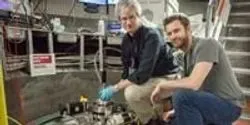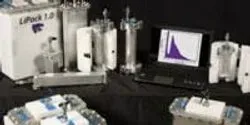neutrons

Groundbreaking work at two Department of Energy national laboratories has confirmed plutonium’s magnetism, which scientists have long theorized but have never been able to experimentally observe. The advances that enabled the discovery hold great promise for materials, energy and computing applications.

Researchers at Sandia National Laboratories’ Z machine have produced a significant output of fusion neutrons, using a method fully functioning for only little more than a year.

The High Flux Isotope Reactor, or HFIR, now in its 48th year of providing neutrons for research and isotope production at the Department of Energy’s Oak Ridge National Laboratory, has been designated a Nuclear Historic Landmark by the American Nuclear Society (ANS).

By levitating a bead of ceramic oxide, heating it with a 400-watt carbon dioxide laser, then shooting the molten material with X-rays and neutrons, scientists with the U.S. Department of Energy's Oak Ridge and Argonne national laboratories have revealed unprecedented detail of the structure of high-temperature liquid oxides.

A University of Alabama in Huntsville (UAH) biology professor's experiment that is set to fly to the International Space Station (ISS) could shed new light on the roles enzymes play in biological processes.













